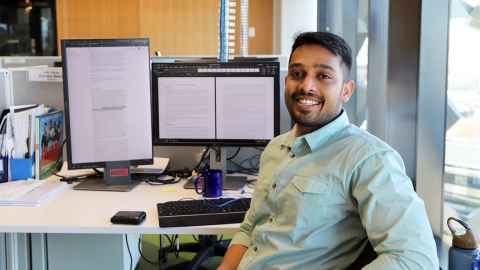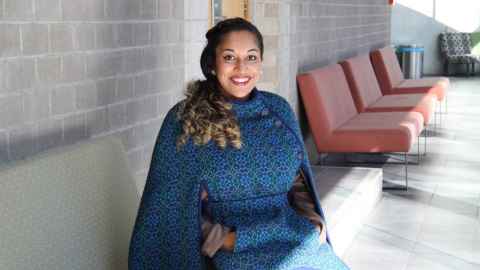Building Back Better in the wake of Covid-19
7 September 2020
Two researchers from our Department of Civil and Environmental Engineering are providing their expertise in disaster recovery in response to the pandemic.

Covid-19 has prompted a number of new research projects within the Faculty of Engineering. The pandemic’s output by Civil Engineering lecturer Dr Sandeeka Mannakkara and her PhD student, Neeraj Shankar, however, was a little closer to their everyday work.
Neeraj's PhD focuses on creating a usable tool based on the last decade of research surrounding Build Back Better (BBB). The BBB concept itself, pioneered by Dr Mannakkara, is now being applied in post-disaster communities worldwide. Neeraj’s goal is for practitioners to be self-sufficient; to be able to monitor their own recovery plans with their BBB framework. He was working with local authorities in the post-disaster communities of Kaikoura and Kerala, India, when Covid-19 struck the world.
Together with Dr Mannakkara, he noticed the parallels between their post-disaster recovery framework and conversations surrounding potential post-Covid recovery.
“That was when Neeraj took it to the next level”, Dr Mannakkara suggests. “He started to explore what all this means to the health sector.” This involved sourcing and compiling a literature review of global documentation – mostly from organisations such as the United Nations and WHO, as well as council information from both developed and developing countries – on pandemic recovery, economic recovery, psychological support, and how institutions function.

The existing BBB framework includes three dimensions: disaster risk reduction, community recovery and effective implementation. “As I was going through the documents, we started to see that we only need to replace the structural resilience factor, which falls under the first dimension, with health sector resilience”, Neeraj notes. Dr Mannakkara adds that the original framework also takes into account “the built environment’s resilience, like land use planning, multi-hazards, risk analysis language planning… now adapted to a biological hazard.”
The COVID-19 version considers how the pandemic is spreading. Even then, there were similarities, such as risk zoning, early warning, and economic impact. “You can already see how recovering economically now is similar to how you’d approach life after a natural disaster”, Dr Mannakkara says.
This applies to healthcare organisations from district to state, and even national levels. A lot of the literature is lessons from previous pandemics, but reading entire documents takes a lot of time; you’d lose your attention on what you want to actually do! So we’re providing recommendations in our tool — like a checklist — to easily indicate on a scale if they have the capacity to support a pandemic.
It also aims to be useful across all phases of a recovery period: pre, post, and during. With useability at its core, the tool itself is importantly not meant to be prescriptive, but has potential to evolve to include the latest information where necessary. As non-experts, this means that both Neeraj and Dr Mannakkara are providing starting points for others to consider within their localised needs.
The tool was published on the BBB website and so far, positive comments have come from as far as the University of Alberta, Engineers without Borders in the Philippines, the Portsmouth City Council, and Nepal’s Ministry of Health.
Neeraj’s recent work in Kerala has been particularly significant. Earlier in the pandemic, the state, with India’s lowest mortality rate, has been widely praised for its success in containing COVID-19. “They are super keen on institutional mechanisms such as this tool”, Neeraj adds. “So they’ve always asked us informally about transition strategies so we sent our new COVID-19 tool to them. Our previous disaster recovery tool generated valuable discussions amongst their disaster management authorities and they found the checklist format to be really helpful.”
“This isn’t even the focus of Neeraj’s PhD but it’s a cool by-product that came out of it. We don’t know where it’ll go just yet”, Dr Mannakkara says. “It also helps that we have broad indicators so it works in conjunction with the work across the University too, such as using mathematical modelling as vital information for our zoning maps.”
All the PhD projects within BBB will eventually feed into sections of this overarching framework. We have someone working on transition recovery that provides recommendations for our transition strategy, for example. Each indicator takes a few years to implement, but that’s our idea — the ongoing development of better knowledge, and to give people the high-level tools to implement solutions independently.